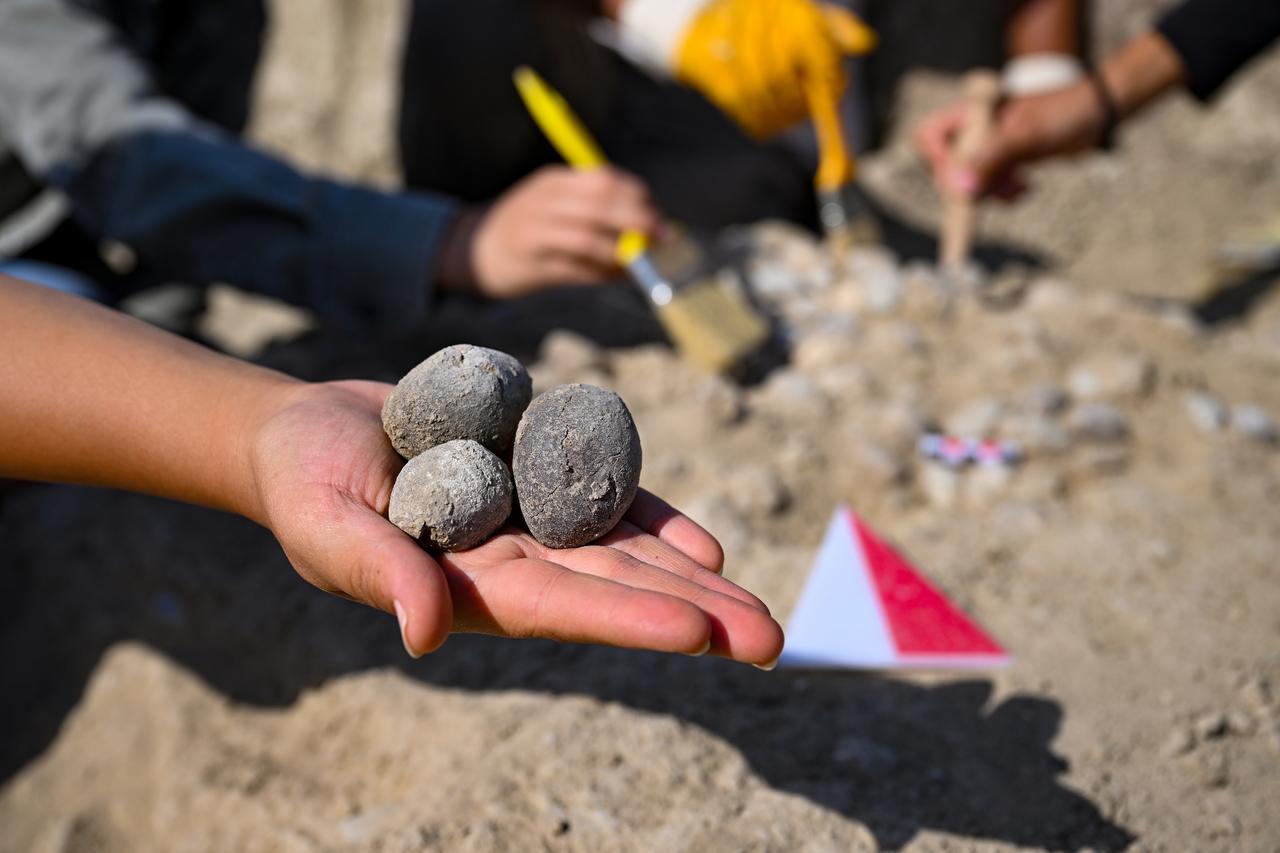
Archaeologists working at Cavustepe Castle in the eastern Anatolian city of Van have uncovered a remarkable cache of sling stones once used in warfare, marking what experts describe as the first such discovery in Urartian archaeology.
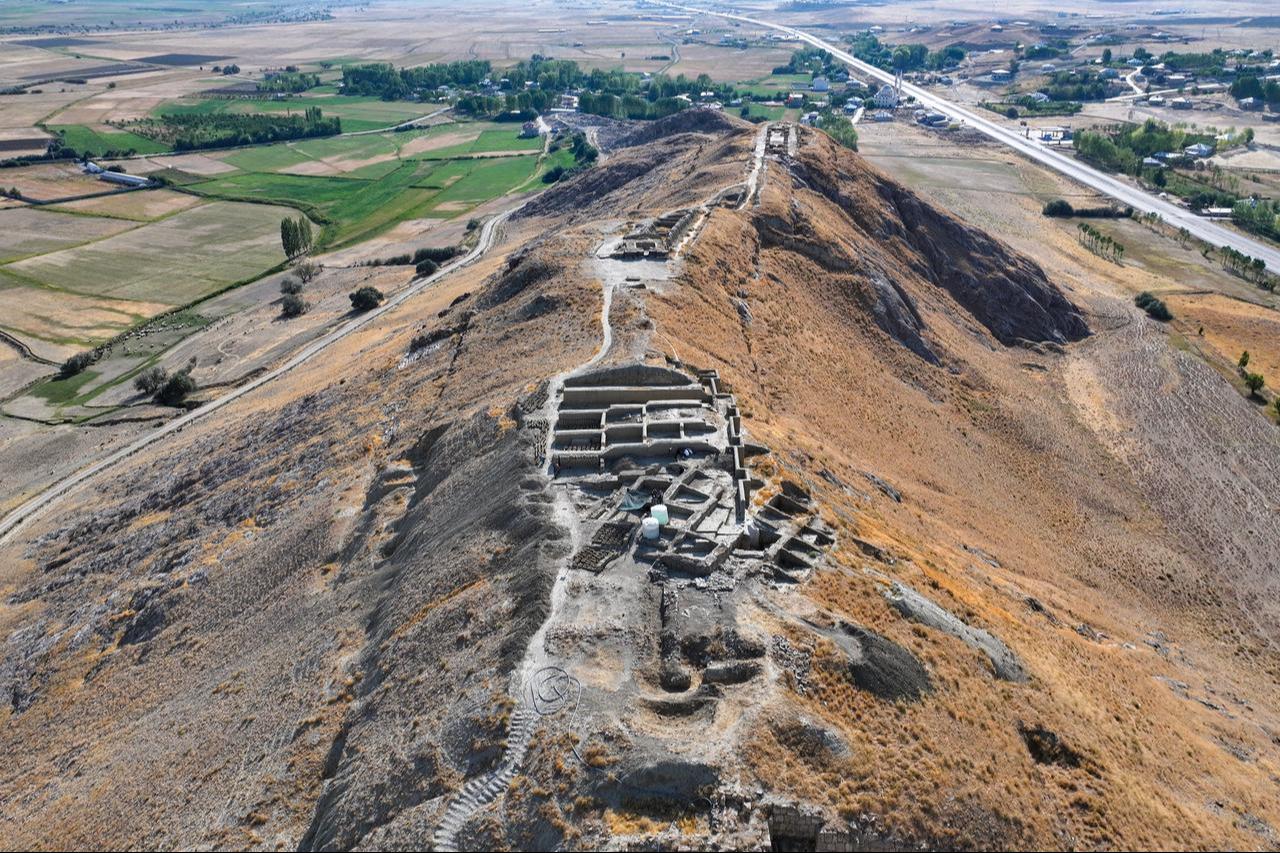
Cavustepe Castle was built in the Gurpinar district during the reign of King Sarduri II, one of the most powerful rulers of the Urartian Kingdom, which thrived in eastern Anatolia in the first millennium B.C.
Excavations and restoration works at the site continue under the supervision of Professor Rafet Cavusoglu, dean of the faculty of letters at Van Yuzuncu Yil University. The project brings together a team of archaeologists, anthropologists, art historians, restorers, and urban planners with the support of Türkiye’s Ministry of Culture and Tourism.
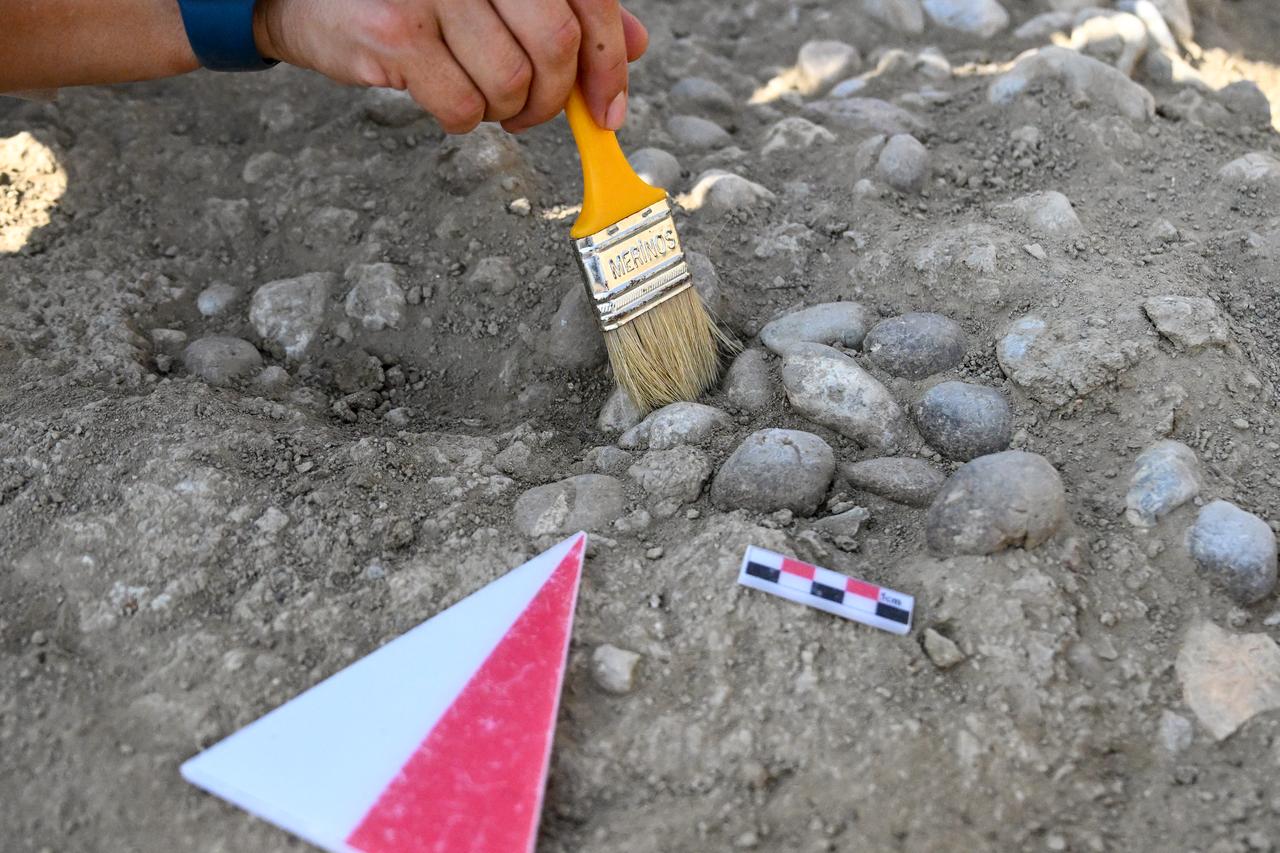
The latest round of fieldwork concentrated on the storage buildings and the area known as the “upper fortress.” Here, researchers uncovered a pile of sling stones roughly the size of hen’s eggs. According to Professor Cavusoglu, the find is exceptional because while sling stones have occasionally been uncovered individually at other Urartian sites, they had never before been discovered in such a clustered formation.
The archaeologists noted that the stones had been collected from riverbeds as well as crafted from clay. Their position close to the defensive walls of the fortress suggests that they were deliberately stored for combat. Cavusoglu described the accumulation as “almost like an arsenal kept in one corner of the castle.”
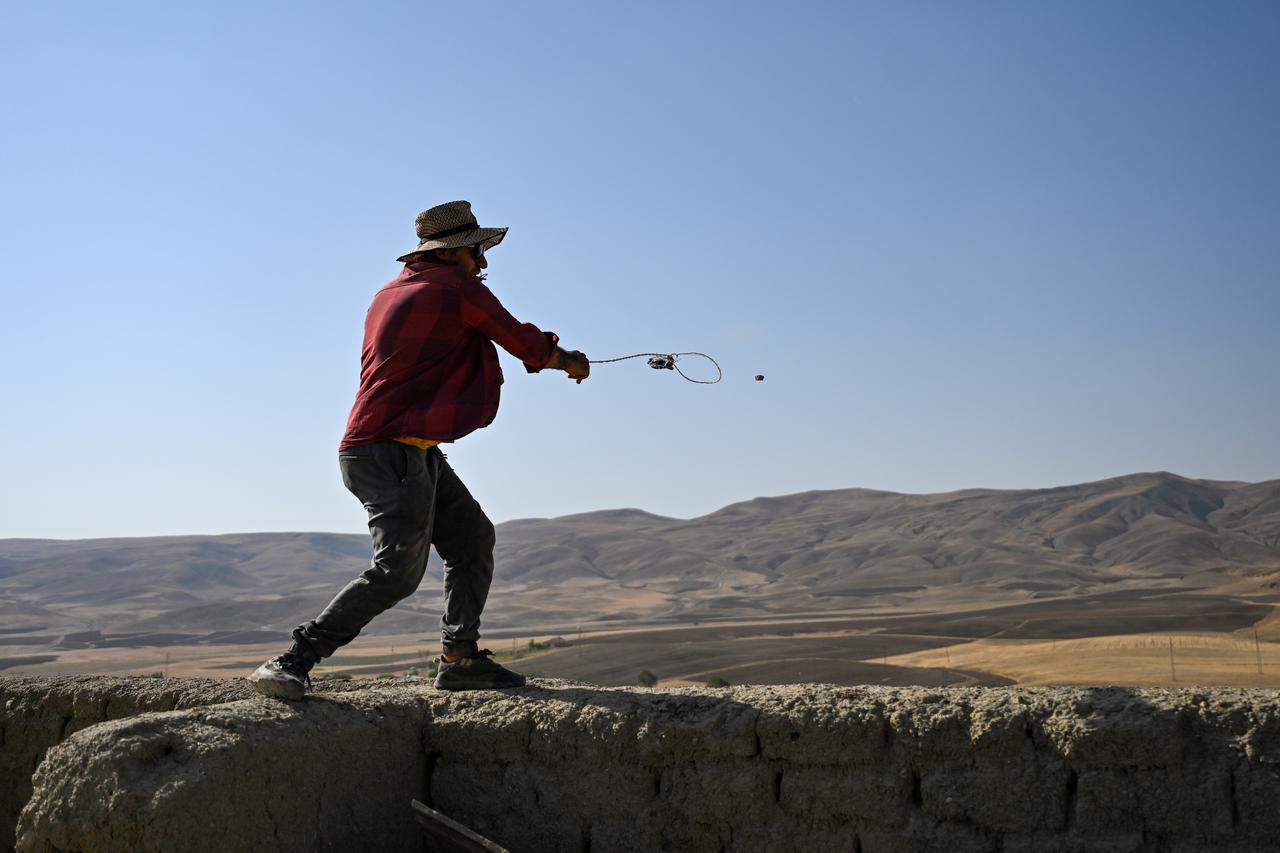
The sling, sometimes referred to as a “Palestinian sling” in archaeological sources, was a simple but effective weapon consisting of two cords attached to a central pouch. A stone would be placed in the pouch, the cords swung in a circular motion, and then one cord released to hurl the projectile toward an enemy.
Cavusoglu explained that sling stones could strike targets with surprising accuracy up to 200 meters and could reach as far as 400 meters. They were considered capable of piercing armor and were used both in open battle and in defensive contexts such as fortifications. He emphasized: “What makes this discovery important is that sling stones appear here for the first time in a clustered form in Urartian archaeology.”
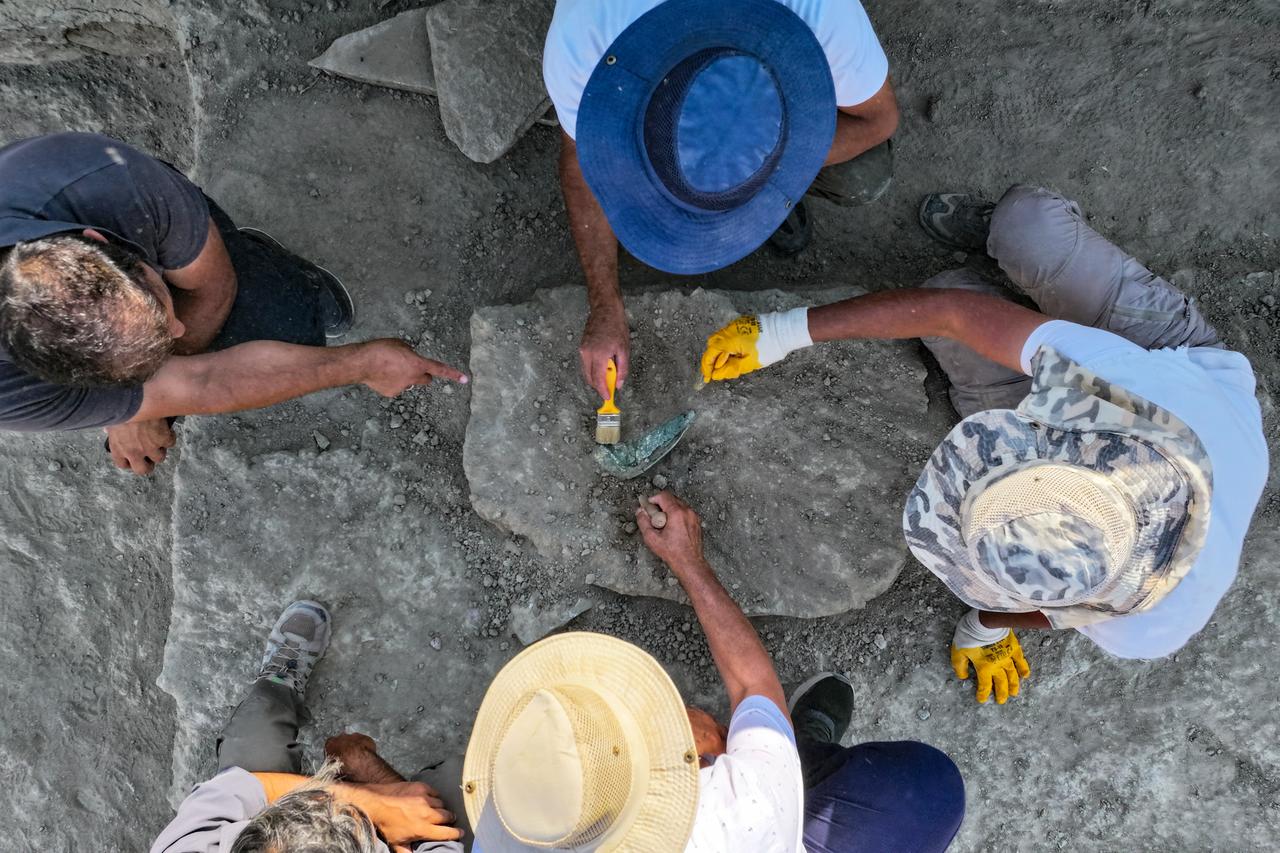
Alongside weaponry, the excavation team also uncovered pottery fragments, bronze arrowheads, tools, and animal bones. To preserve the architectural remains, researchers are reinforcing the walls of the uncovered chambers with mudbrick blocks produced according to original Urartian measurements. The aim, according to Cavusoglu, is to ensure the structures survive and become more understandable to future visitors.
The discovery of the sling stones adds a new dimension to the understanding of Urartian military practices. For archaeologists, the clustered find is not only rare but also confirms the castle’s strategic role as both a stronghold and a storage site for arms.